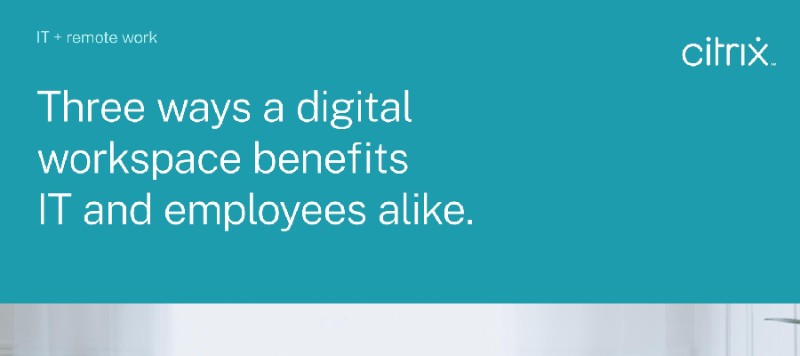Digital Workspaces the Future of Remote Work
Published on 25 Aug 2021

Over the past decade, the number of people working remotely has been steadily increasing. This past year due to the Covid-19 pandemic the number of people working remotely has more than doubled. Companies that did not have existing remote working plans in place had to scramble to put the necessary infrastructure in place. Keeping business processes running smoothly, giving employees the tools they required, while keeping them productive and engaged is a complicated undertaking. On top of that businesses need to ensure they keep their sensitive information secure. All of this needs to be accomplished in a fairly short time frame.
See also: 3 benefits of Citrix ADC with flexible licensing | Whitepapers.online
The Mindset About Remote Work is Changing
The conventional thinking about remote work is negative. Most organizations do not support remote working for a variety of reasons. These reasons can include: managers being concerned that employees would be less productive, a negative impact on collaboration, increase in risk to data security, among others. However, after being forced to content with remote working this past year, many of the same companies that opposed the idea now embrace remote working. When implemented correctly, remote working can be very effective. Collaboration, productivity, and security remain high.
Important Statistics About Remote Working
- 5 million Americans worked from home a few times a week before the Covid pandemic
- 42 million American employees are expected to work from home (part or full time) by December 2021
- That is a 733% expected increase in the number of employees working remotely in two years
There are two important questions that business leaders should ask before committing to remote working:
- How hard would it be for the IT team to support a workforce that is divided into remote, on-premise, and hybrid environments?
- Does the company have the necessary infrastructure to support remote working without taking on undue security risks?
According to estimates, before the pandemic, 5 million American employees were working from home i.e. 3.6% of the workforce. These employees worked from home 2 or 3 days per week. This number has increased exponentially over the past two years. Experts now estimate that close to 42 million Americans will be working from home by the end of the year.
Digital Workspaces Can Support Remote Work Needs
Well-designed, unified digital workspaces are the necessary way forward. These digital workplaces are able to deliver secure remote work experiences. They can also be more cost-effective than traditional office spaces. The right technology is essential for a digital workspace to be effective. This type of infrastructure will be beneficial not only for full-time remote workers but also for people who are working offsite or on a hybrid model.
Download this white paper by Citrix to understand how remote working can be beneficial for both employees and employers alike. The report provides insights on why a unified digital workspace is essential for the successful implementation of remote working.
